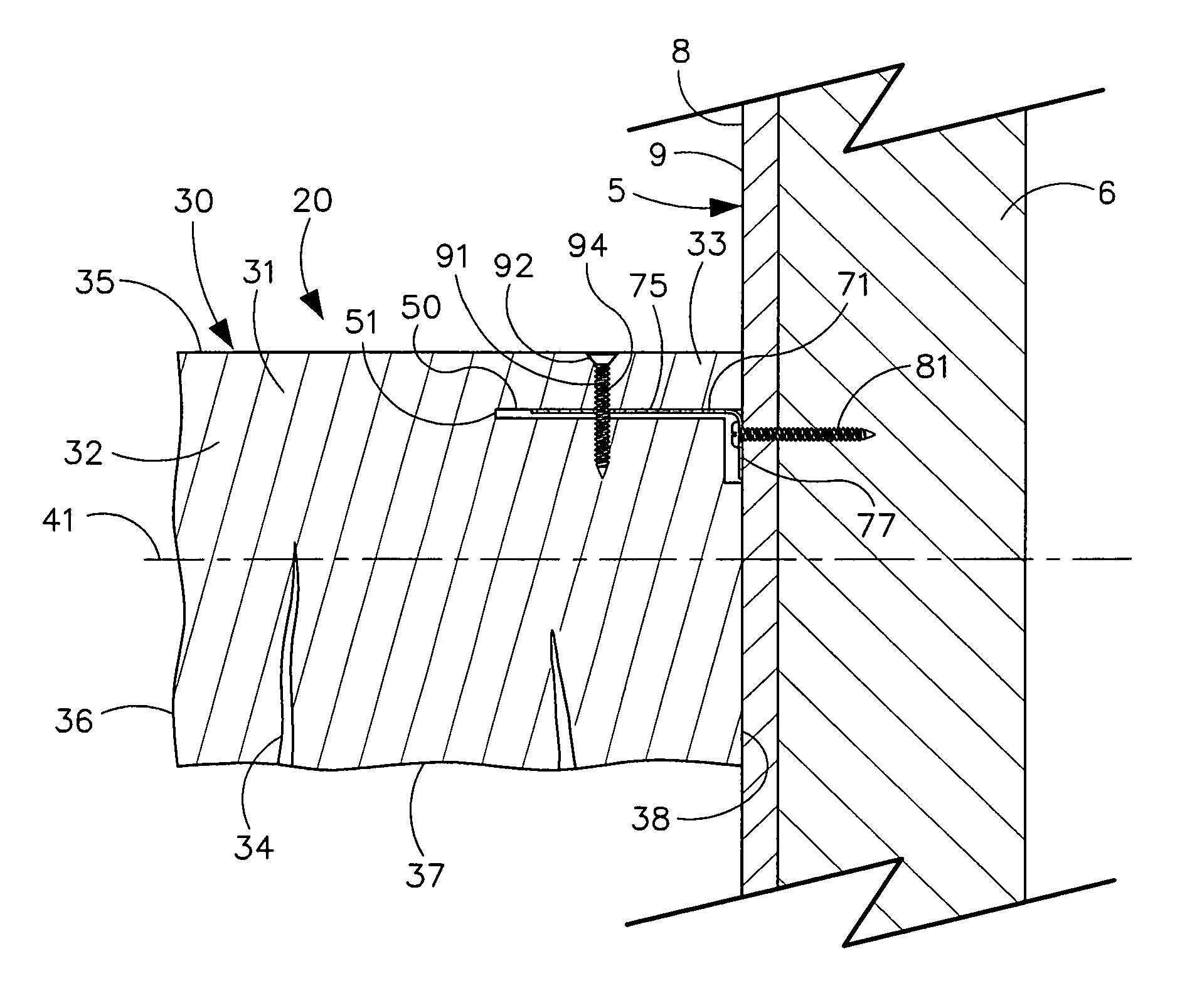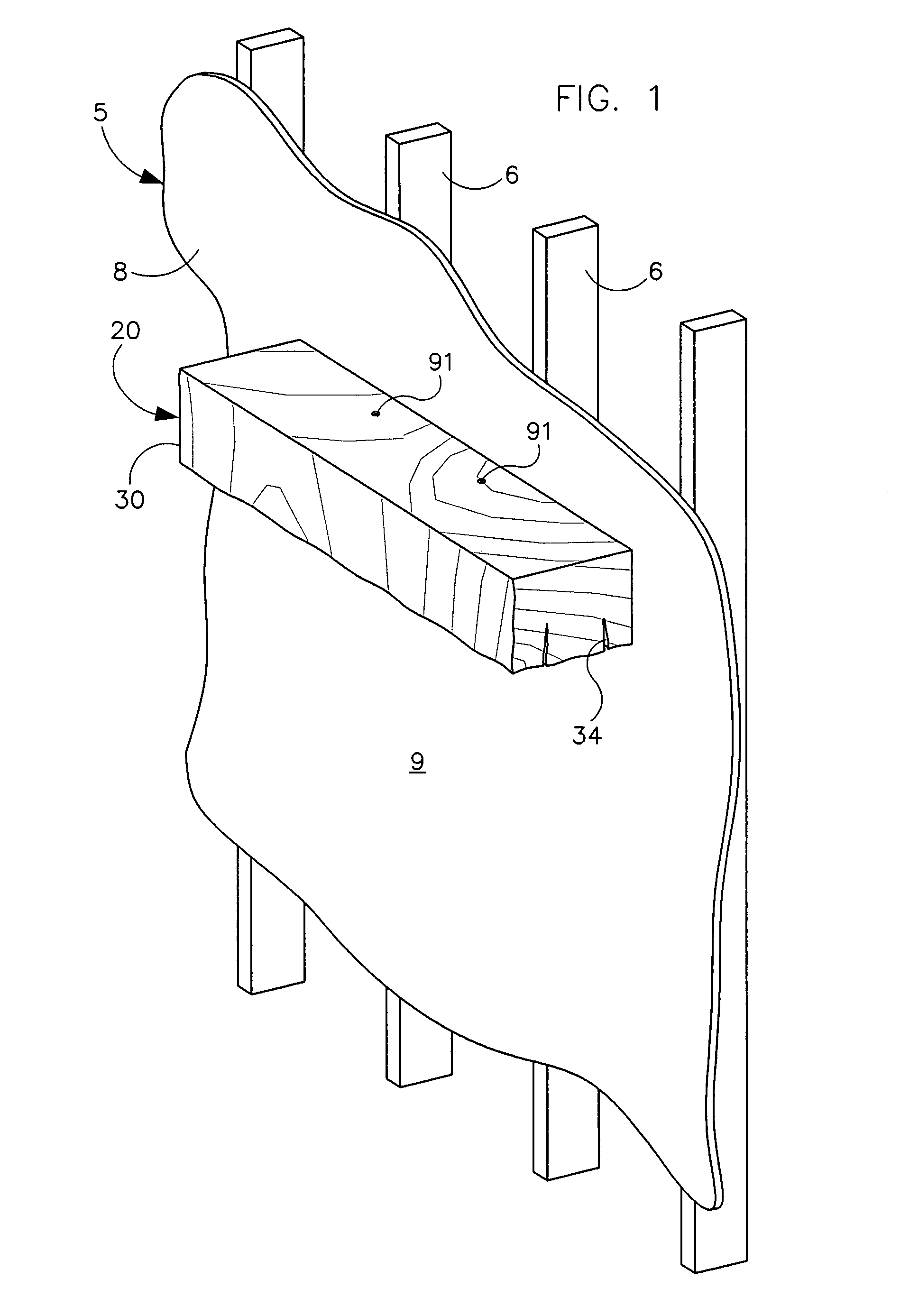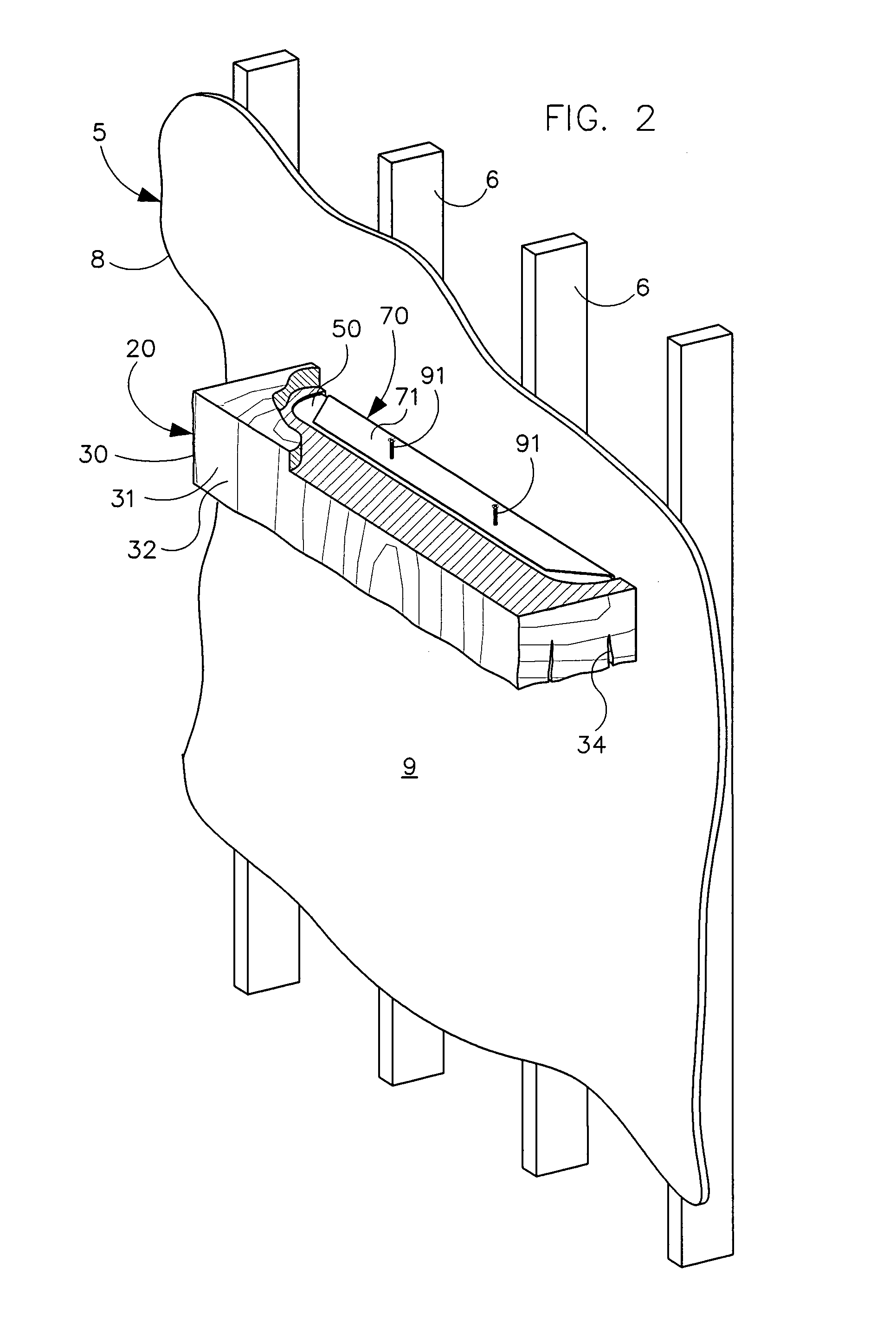Mantel with hidden mounting assembly
a technology of mounting assembly and mantel, which is applied in the field of mantel or shelf, can solve the problems of not always the same distance between adjacent vertical wall studs in a wall, other articles are relatively bulky or heavy in weight, and the type of securement is generally considered less desirable for weight baring reasons than securing directly to a stud
- Summary
- Abstract
- Description
- Claims
- Application Information
AI Technical Summary
Benefits of technology
Problems solved by technology
Method used
Image
Examples
Embodiment Construction
[0036]While this invention is susceptible of embodiment in many different forms, the drawings show and the specification describes in detail preferred embodiments of the invention. It should be understood that the drawings and specification are to be considered an exemplification of the principles of the invention. They are not intended to limit the broad aspects of the invention to the embodiments illustrated.
[0037]Building walls 5 commonly include a wall frame with uniformly spaced vertical wall studs 6. The wall studs 6 are typically spaced apart about 16 inches. Drywall or another suitable wall forming material 8 is placed over and secured to the wall frame and its studs 6. The outer surfaces 9 of the drywall 8 form the visible surfaces of a room. The wall frame and studs 6 are internal and remain hidden from view. Shelving and mantels are used to elevate items off the floor and display or support them on the vertical wall 5. Shelves and mantels project out from the outer surfac...
PUM
 Login to View More
Login to View More Abstract
Description
Claims
Application Information
 Login to View More
Login to View More - R&D
- Intellectual Property
- Life Sciences
- Materials
- Tech Scout
- Unparalleled Data Quality
- Higher Quality Content
- 60% Fewer Hallucinations
Browse by: Latest US Patents, China's latest patents, Technical Efficacy Thesaurus, Application Domain, Technology Topic, Popular Technical Reports.
© 2025 PatSnap. All rights reserved.Legal|Privacy policy|Modern Slavery Act Transparency Statement|Sitemap|About US| Contact US: help@patsnap.com



